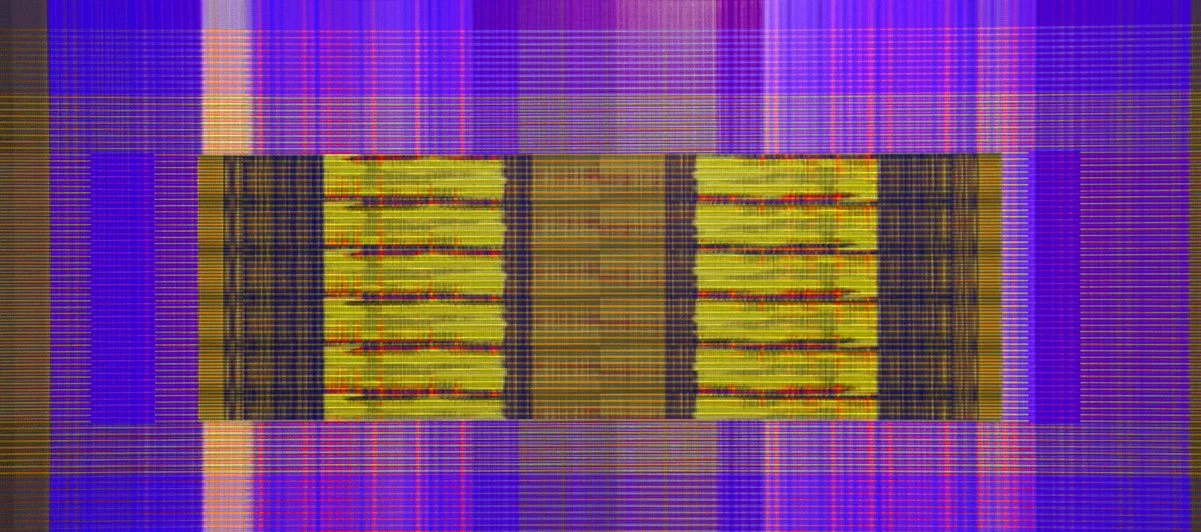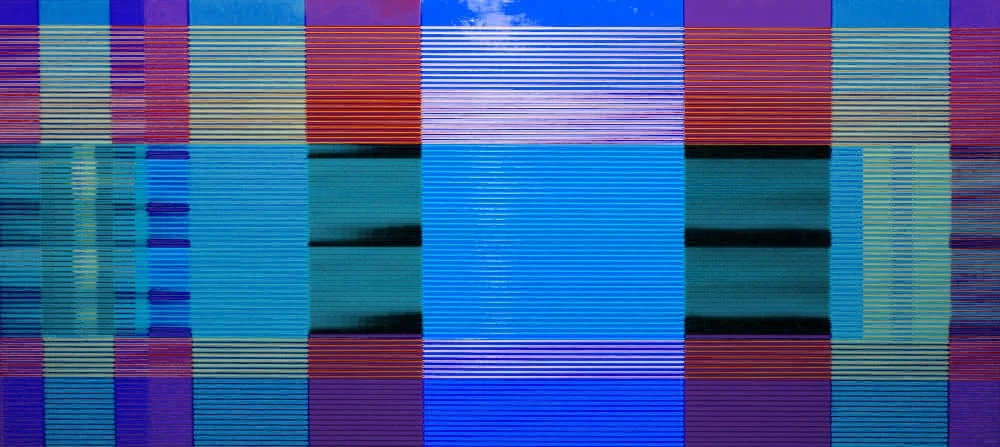Synthetic art of Alina Marat
Written by Darriel Patrick
31/10/2022
Return to Eden by Alina Marat at Take Nagaway Gallery
Photo: Courtesy Take Nagaway Gallery
Abstraction is challenging to solve with technology because most of us value digital technologies for their content rather than their form. We use the Internet or download applications that focus solely on the information delivered and pay little attention to aesthetics. However, Alina Marat is an artist who has spent much time studying ‘digital style’ – the colours, lines and shapes displayed on the computer. She rebels against the formulaic palette and reinvents it. She teaches us what is truly possible with a keyboard, mouse, and screen. This is not the abstraction the Expressionists practised; there are no drunken drops or heroic brushstrokes here. But it is a type of abstraction as coolly meditative as the geometry of Mondrian, an artist who found great spirituality in the urban grid and jazzy design of modern life. Like him, Alina Marat searches for the very foundations of the medium, delving into the intricacies of programming to find a new way of understanding machines and the modern world.
New media artists are expected to create content for the screen, but Marat brings her discoveries back to the traditional confines of the canvas. More precisely, an aluminium panel is the actual surface for her artwork. This material only adds to the feeling that we are looking at something designed and created by machines rather than an artist’s touch.
Alina Marat. Orientalism
Alkyd on aluminium, custom software, computer, digital projection, 44’’ x 96’’ (111.8 cm x 243.8 cm), 2022
Photo: Courtesy Take Nagaway Gallery
Initially, Marat was inspired to create such artworks by the first computer on which she worked. The artist received higher technical education in the 1980s at the K.E. Tsiolkovsky Moscow Aviation Technological Institute, one of Russia’s foremost educational institutions to teach programming. Marat studied in the metallurgical department, which later helped her find the ideal basis for her work – aluminium. Thanks to her classmates, she became seriously interested in new technologies, which had just become available to a wide range of professionals. Gradually, she became almost obsessed with programming and continues improving her skills. However, the first computer, thanks to which the future artist began to join the new world of information technology, differed significantly from today’s gadgets. It kept freezing and disconnecting. Before the computer crashed, it produced a series of lines, and Marat retained these luminous stripes in her mind’s eye. The artist then experiments with the stripes created in a graphics program. She places them as a mask on aluminium panels and then paints them with fluorescent pigments, imitating the glow of a computer screen and creating her ‘hybrid painting’. As a result, her designs range from bold and simple to intricate and subtle, all through her masterful use of colour and line.
Alina Marat. If You Look Out the Window For a Long Time on a Sunny Day
Alkyd on aluminium, custom software, computer, digital projection, 43’’ x 93’’ (109 cm x 236 cm), 2021
Photo: Courtesy Take Nagaway Gallery
The exhibition Return to Eden at Take Nagaway Gallery presents the most spectacular and outstanding artworks of Alina Marat. In Orientalism, blue lines sweep a crimson background, framing a pulsating rectangle of yellows and browns with purple stripes of mixed colour. In the art piece If You Look Out the Window For a Long Time on a Sunny Day (2021), Marat creates an optical illusion of a writhing ribbon of minty-cool flowers passing through slits of deep purple verticals. Glowing ovals tremble and freeze on the surface of the painting. It is reminiscent of updated versions of paintings based on colour field studies, in which artists such as Morris Louis and Kenneth Noland experimented with acrylic paint and raw canvas. Marat adds another layer to each work—a video projection that flickers across the surface of the painting. The source of video images are films, video footage, YouTube and home videos. According to the artist, their formal qualities are important, not their content. Using special software, she crops the projection to fit the size of the picture and modifies the film code so that it is compressed and multiplied in a loop. Then she projects this onto the painting, changing its colours and giving the work movement and rhythm – a hyper-colour field.
Alina Marat. At Zenith
Alkyd on aluminium, custom software, computer, digital projection, 44’’ x 96’’ (111.8 cm x 243.8 cm), 2022
Photo: Courtesy Take Nagaway Gallery
In the work At Zenith (2022), a composition of familiar horizontal lines is covered with broad vertical stripes under the glow of a projector. The stripes flow across the picture, and from time to time, they are crossed by white shapeless spots reminiscent of fragments of light clouds on a windy day. The projection and painting form a dialogue with each other, surprisingly subtle and complex. It is in these moments, when Marat’s entire structure comes together that we can fully appreciate her ingenuity. Her goal is much more than just instilling an understanding of technology, although she achieves that. She proposes to find the sublime in one of the central and most banal aspects of modern life, namely the personal computer.
Darriel Patrick
Before becoming Contributor at Centre for Arts, Research and Culture, Darriel worked as the Malooi's Digital Programmes. He was previously a curatorial fellow at the BALZ Gallery and has over 9 years of experience working in the museum sector delivering, commissioning and curating projects.




